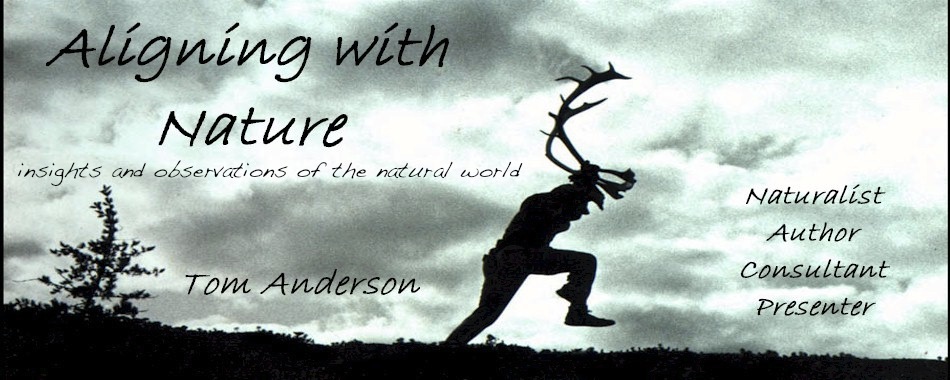A Birthday Hike
Frank is an unflappable fellow. He is eager to cast off on an adventure to see what is on the other side of a mountain. A self-made, skilled woodsman, he aptly describes himself, “I’m like a grizzly, I follow my nose and I mind my own business.”
Born of German immigrants in Toronto, Frank made his way to the Yukon as a young man back in the 1970s and since then has called this wild country home. He spent eight winters living in a small bush cabin he built 40 miles from the nearest road down the 80 mile fetch of Teslin Lake. When he needed supplies, he would take his dog and sled and go for a two-day hike that was often well below zero to buy grub in the small community of Teslin.
Wincing at the thought of such a task, I asked, “Wasn’t it much harder to pull a full sled 40 miles back to your bush camp than the empty one you had on your trip in?”
“Oh,” he said enthusiastically with a big grin, “Oh I was a happy boy!” He paused to rub his hands briskly together, “Because I was heading back into the bush with a sled full of grub and goodies!”
Fortified with mostly moose meat, Frank snowshoed and explored miles and miles of backcountry. One winter when he and his wife were short of meat, he had to resort to snaring snowshoe hares.”There’s not much warming meat on the bunnies.”
Another year, found him without a moose when the lake started freezing up in November. He spotted a tardy grizzly walking along the lakeshore ice. Bears are typically hibernating by then but for some reason this one was still moseying about. Frank quietly worked himself to a position to make a shot. He is a skilled marksman and he grimaces while recollecting that his shot was not a killing shot and he ended up having to track a wounded grizz.
Alert, he moved cautiously.Noticing that the tracks were starting to swing in a broad loop, he became razor sharp in his attention. Suddenly from off to one side the wounded bear came through the snow towards Frank. One shot killed the bear. He gutted the animal and removed its hide before pulling the meat back to the cabin. “That bear,” he recalls making a sour face, “tasted like a wet dog smells.” For two days he and his wife tried to eat the bear, but they could not. “At least our dog had meat for the winter.”
Frank and his wife Debbie had invited us to their home, a two-hour drive from our Outpost to celebrate Frank’s birthday. Frank suggested that we come early in the day to join him on a hike into some country up along the Canol Road.
The 270 mile long Canol Road is a gravel and mud road mostly etched with the texture of washboard and potholes. The summer-maintained road demands sporadic drivers to pay attention.
Built during WWII, this crude road, dubbed the Canol for Canadian Oil, was built so an adjacent oil pipeline could be constructed. It was determined that the oil would be needed to help support military operations in the Yukon and Alaska. The source of high-grade oil was in Norman Wells in the Northwest Territory. Short-lived, the oil pipeline operated less than a year and was shut down shortly after the war ended in 1945.
There are no services on the Canol for over 140 miles until you get to the small remote community of Ross River.
We rendezvoused with Frank at Johnson’s Crossing on the Alaska Highway for a cup of coffee and freshly baked raspberry scone. The turn-off for the Canol is nearby and after 20 miles we eased on to a meager pull off on the rugged road. I wondered if the dark pile of recently deposited bear droppings had served as Frank’s marker for the unseen horse trail we were to follow.
Debbie had stayed home to render garden grown cabbages into sauerkraut and to tend the outdoor fire that was slow cooking a Dutch oven full of bear stew and home grown vegetables for the birthday supper. Like Frank, she could tell us a tale or two of bush living that would make good copy for a horrific adventure tale.
Anytime I have gone for a hike with Frank, he foregoes hiking poles or a staff and prefers to carry a rifle. With a rifle he feels he has no need to carry bear spray; nor has he ever had to shoot a threatening bear other than the earlier mentioned grizzly. He understands he effectiveness of bear spray but is more comfortable with his rifle.
We hefted our packs with food, spare clothes, pepper bear spray, cameras and binoculars and fell in behind Frank as he led us from our parked vehicles into the bush where there was really no discernable trail entry. Immediately, behind a spruce, we found ourselves on a well-used old packhorse trail.
We wondered who had made the horse trail up here and Frank said that years ago this was the outfitting range of the late Old Andy Smith. He guided big game hunters up this way.
“ Old Andy Smith had a deep booming voice and ferocious eyes.” Frank chuckled, “I called him One-and-a-half man because Old Andy proudly growled “I’m one half Tlingit, one-half Scotsman and one-half N_ _ _ _ _r!”
No matter the arithmetic of the pedigree, I was grateful for the trail that “One-and-a-half-man” had etched on this forested slope.
We wove upslope under the pines and spruce and soon encountered subalpine fir. We crossed a couple of swampy areas and two creek crossings and passed several recent piles of bear droppings. There was no disguising the fact that the bears were feeding heavily on mossberries (also known as crowberries) as their piles of waste looked like beautiful black mounds of shining preserves.
After an hour of steady climbing, we broke out of the trees and continued climbing through the knee-high snarl of dwarf birch or as Frank calls it, “the shin tangle.” We paused at a small lively mountain stream banked with blossoms of varying bright colors for face washing and cold mouthfuls. When Nancy exclaimed about the lovely smell along the rushing flow, Frank grinned when he said this was “Weasel Piss Creek.” His timing over his newfound title was perfect.
Another half an hour of hiking found us on top of the ridge and summit. Here the walking was easy on the lawnlike alpine. We stopped to eat our lunch and to glass the large expansive basin that opened below us. Dotted with ponds and clumps of fir, it appeared like a park setting.
Herds of clouds dropped sheer curtains of rain in the distance and we wondered if they might move our way. Frank assured us, “We’ve got nothing but sunshine. . . in our hearts and we’ve got gear to protect the other parts.”
We glassed the large basin in front of us for signs of any wildlife. Frank was particularly interested in sighting woodland caribou. He carried a caribou tag in his pocket and if he got lucky, he had four cloth game bags to carry out a quartered out caribou. The lightweight bags make it easier to handle the quarters of meat and keep it clean from dirt and debris.
Why not take advantage of four extra hikers if the opportunity came up? Rather than shuttle back and forth up the mountain he would be able to get it down in one trip if we weenies could manage. Frank reckoned that he has packed out over forty caribou, moose and bear in his lifetime and any help is appreciated.
In less than a month, Frank will boat to his remote moose camp where he will attempt to call a horny bull into gun range. Rarely does he miss filling his freezer with fine moose meat. We asked about bears that come around his moose camp looking for some food. “Well,” he said, “if a bear comes around camp while I’m there. . . I’ll eat him!” He always carries a bear tag while moose hunting because he likes nothing better than bear stew on his birthday.
The rain clouds avoided us and we resumed our hike to the very summit while Frank stayed put to continue his methodical hawklike glassing the mountain bowl for caribou.
After an hour or so of roaming the high ridge line, we made our way back towards Old Andy Smith’s horse trail. More than a dozen cackling ptarmigan took to the air as we brushed past a thicket of sub-alpine fir.
Three hours later we were gathered around a beach campfire with plates piled with steaming chunks of tender bear stew. I wondered if the moose near Frank’s distant moose camp could hear our rousing singing of “Happy Birthday.” If so, they might do well to shudder knowing that a keen predator has survived another year.














